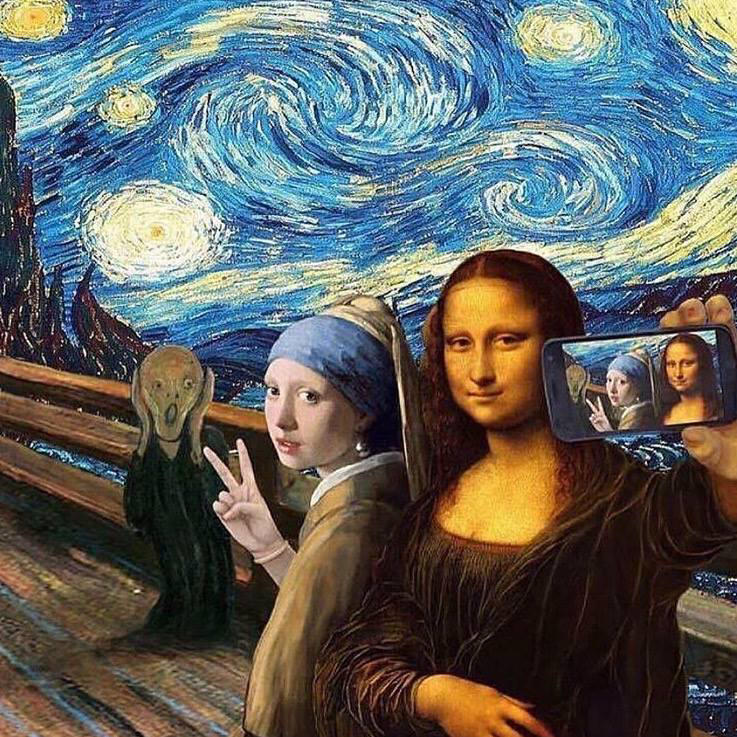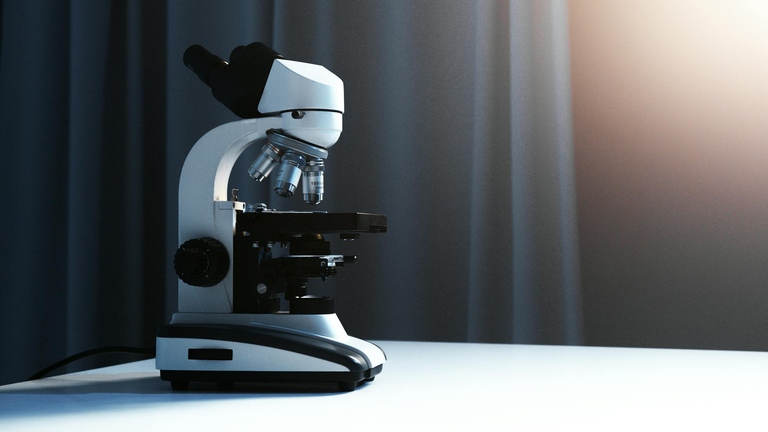The science of art!!

Wikipedia
The interplay between science and art is more entwined than one might initially think. Where the brush strokes meet the microscope, a fascinating narrative unfolds, unveiling the secrets canvassed in varnish and pigment. Scientific methods offer a window into the past, present, and future of art, often disclosing stories that the naked eye or mere speculation could never unearth.
Let's start with a technique that's almost synonymous with dating ancient artefacts: radiocarbon dating. This method is a beacon in the dark for historians and conservators. It works on the principle that all living things absorb carbon from the atmosphere, including a certain amount of radioactive carbon-14. When an organism dies, it stops replenishing carbon, and the carbon-14 begins to decay at a known rate. By measuring the remaining carbon-14 in organic materials, like canvas or wooden panel support, scientists can estimate the artwork's age. However, this isn't a catch-all; it's applicable only to organic materials and offers a date range rather than an exact year.
Imaging technologies have opened a veritable Pandora's box of insights when it comes to examining art. X-rays penetrate through paint layers, unmasking the underlying structures such as the canvas, panel, or even earlier paintings that lie beneath the surface. X-ray fluorescence (XRF) goes further, identifying the elemental composition of pigments, which can help in sourcing the materials used, hence shedding light on historical trade routes and practices.
Then there's Infrared Reflectography (IRR), a method regularly used to explore underdrawings—the initial sketches artists lay down before painting. IRR has unveiled corrections, alterations, and even completely different compositions hiding beneath the final painting's surface. Through it, we can follow the artist's thought process like a detective tracing their steps through a murky alley of creativity.
Another fascinating technology is multispectral and hyperspectral imaging, which allows the differentiation and identification of pigments through their unique spectral signatures. While the human eye sees color in three bands (red, green, and blue), multispectral imaging captures information far beyond the visible spectrum. This can reveal not only hidden underdrawings but also alterations due to aging or damage, sometimes highlighting previously unseen details that lead to new discussions about an artwork's authenticity and provenance.
Let's not overlook the mundane-sounding yet mighty Optical Microscopy, which brings the microscopic universe of art into view.

Minute samples or cross-sections of paint can be scrutinised to understand the layering, technique, and composition. Through such a lens, one can ascertain the type of binding medium used—be it oil, egg tempera, or a mixture—thus unlocking yet another chamber of the artist's methodology.
Artificial Intelligence (AI) too, is carving its niche in art analysis. By feeding an AI system millions of art-related data points from styles and periods to brushwork and colour palettes, powerful algorithms can start predicting an artwork's origin or authenticate a piece with a high degree of confidence.
However, none of this technology operates in isolation. Chemical analysis techniques like Gas Chromatography-Mass Spectrometry (GC-MS) break down the samples into their molecular components to identify organic compounds in an artwork, offering clues about the materials and techniques the artist used.
But science isn’t just unveiling art's past; it's protecting its future. Conservation science is a burgeoning field dedicated to the use and development of materials and techniques to prevent and repair damage. It's a blend of old-school wisdom and cutting-edge technology, from understanding the chemistry of a varnish to employing lasers for gentle cleaning.
When thinking of science and art, one might imagine a clash of worlds—the calculated precision of the scientist against the free spirit of the artist. Yet, through scientific analysis, we unlock a deeper appreciation for art. Each brush stroke is not just an expression of creativity but a complex alchemy of materials, culture, and technique that can now be probed, understood, and preserved for future generations.
Therefore, as scientific tools evolve, our comprehension of artworks does too. We learn not only about the art itself but about the people, societies, and environments they emerged from. It's almost a form of time travel—science being the vessel that takes us back and imparts understanding of historical contexts and the intricate dance between artists and their canvases.
And although this may seem an unconventional pairing, art and science are both quests for understanding and interpreting the world around us. Each painting, sculpture, or installation is a potential mystery waiting to be solved, and the diverse range of scientific techniques are our magnifying glass, revealing subtleties and stories that have waited sometimes centuries to be told. In essence, the science of art is the decoding of beauty's blueprint—it’s a dialogue between the past and the present, concocted in labs and galleries for us and posterity to relish a richer narrative of human creativity.
References
- https://www.researchgate.net/publication/339792695_The_application_of_state-of-the-art_technologies_to_support_artwork_conservation_Literature_review
- https://www.sciencedirect.com/science/article/abs/pii/S2212478016300077
- https://heritagesciencejournal.springeropen.com/articles/10.1186/2050-7445-2-13
- https://www.jstor.org/stable/24705332
- https://www.sciencedirect.com/science/article/abs/pii/S0584854713002012
- https://medium.com/@srwriter/the-scientific-methods-used-to-examine-paintings-31a7fce2a6dc
- https://nap.nationalacademies.org/read/11413/chapter/8
- https://www.mdpi.com/2227-7080/4/1/6


Thanks for your contribution to the STEMsocial community. Feel free to join us on discord to get to know the rest of us!
Please consider delegating to the @stemsocial account (85% of the curation rewards are returned).
You may also include @stemsocial as a beneficiary of the rewards of this post to get a stronger support.
Art in its raw form is a beauty to behold and the science behind it has its own branch to be looked at and in our contemporary society where AI is taking over, it's just become even more intriguing as it is complex
Thanks buddy for your contribution. All you have said above is true.
Different materials used for painting and in the painting make a different, there is always some studies to improve that.
Want to Know more about Hivepakistan?
Ping Us On Hive Pakistan Discord server
To support HivePakistan, delegate Hive Power to hivepakistan and earn 90% curation reward :)
Here are some handy links for delegation
A delegation of 500 or more HP makes you earn Hivepakistan supporter badge.
Yes, many more studies are being employed to read drawings better. Glad this is happening in our time
Dear @jsalvage !
James! Your article is good!
Kasmida 😂
kamsahabnida! = thank you! 😄
Crazy, great analysis